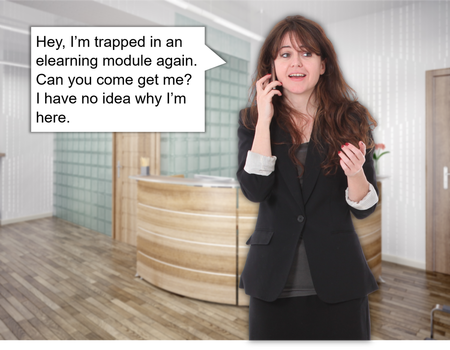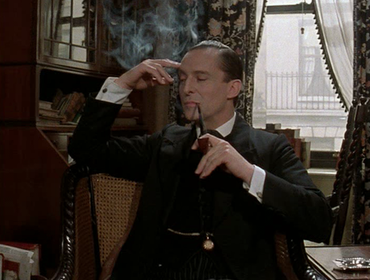|
I try to develop scenario-based, character-driven courses whenever possible. Consequently, I spend a lot of time thinking about where the action will be set. In fact, I allocate a large part of my development time to what I call "building the set." It's the most difficult part for me because those early decisions influence the rest of the development process. In this post, I'll provide some insight into my process.
Setting is the place and time and in which the story takes place. I choose my setting intentionally because I know they influence how the learner will experience the course. My settings fall into three categories:
0 Comments
Rules! Who needs 'em, amirite? Me. I do. I like rules. Life is difficult enough without some guidance about what to do and what not to do. There's a caveat, however. I worked in the dorm snack shop during college. I knew that if I ensured all the money was facing the same direction in the drawer, it would be easier to count at the end of the night. I was diligent about arranging the money and won praise for my efforts (not much is expected of a freshman). Then, one night, we got slammed. I was ringing non-stop and just shoved money into the drawer as fast as I could. During a lull, my manager looked at my drawer and chastised me because the money wasn't in the same direction. Consequently, it never was again. My manager had a hissy fit every night, and I had to stay longer because I had to arrange all the money at once during closing. It was worth it. Non, je ne regrette rien!  This could have been us. This could have been us. See, I like rules and will gladly follow them until someone tells me I need to follow them. I guess I'm a (passive aggressive) rebel that way! I'm not a cashier anymore. At least, I don't think so ("Okay. You ordered a large Blended Learning Smoothie with ILT, online modules, coaching and an engagement boost. Will that be all? We have some delicious blueberries."). But there are still rules that I don't break, only this time, I made them. Here are my basic, bare minimum, Top 10 Rules for creating training materials.
I love it when a movie drops me off in the middle of the action with no exposition about what's happening. I like that the story unfolds as I am submerged further into this foreign, yet familiar, world. Starting a story in the middle is a literary device called in medias res. The term is officially defined as, "in or into the middle of events or a narrative." Great examples of the technique include texts as old as Homer's Odyssey.
This doesn't mean tossing a car chase into the opening credits. One blogger writes, "In medias res means we start as close to the overall story problem as possible" (Lamb). The movie Drive (2011) is a good example. We are dropped into the driver's life as he prepares to do another job. The voice over says, "...hundred thousand streets in this city, you don't need to know the route. You give me a time and place, I give you a five minute window. Those five minutes I'm yours. Whatever goes down I'm yours. Minute either side you're on your own..."(Source: IMSDB). You don't know who he is or who he's talking to, but after about 10 minutes, you'll know that while this may be the beginning for you, it certainly isn't for him. I often use in medias res in my storyboards. Here's a quick and dirty example.
Once you can articulate the performance and the steps involved, it's time to build layer two, which is an authentic situation where the desired performance is needed. Now, you may be tempted to simply rewrite a scenario that a SME gave you, replace “Managers have to…” with “Sally has to…” and call it a scenario. But all you've done is put a dress on layer one. This approach may feel artificial to the learner. Scenarios become just something to make the training "interesting." Characters become props. Learners lose the connection between the desired performance and their real work lives. Meanwhile, poor one-dimensional Sally is shoved into coaching scenario and the learner wonders, "Why is this happening?"
There needs to be a strong, relevant, and realistic connection among the core and its two layers. Layer one focuses on the how, but it's layer two that explains the why. The scenario doesn't come to life until all three elements effectively support one another. Building a solid second layer requires that you answer three questions that together address the larger question of "why?"
I did not appreciate Sherlock Holmes until the Benedict Cumberbatch version appeared. After growing bored of watching those episodes way too many times, I began to seek out another version of the master detective. That’s when I found Jeremy Brett’s version from the late 1980s. He was fantastic in the role and has become, for me, the Sherlock Holmes. It was not only his performance that won me over. It was the world that the series created around him - the lighting, the costumes, the Victorian-era ambiance.
|
�
AuthorHadiya Nuriddin is the CEO of Focus Learning Solutions and the founder of Fresh Eye Reviews. Categories
All
Stay up to date!
Enter your email to get a monthly digest of blog posts and other Focus Learning Solutions insights and news (we will not sell your email address). Archives
September 2016
|






 RSS Feed
RSS Feed
